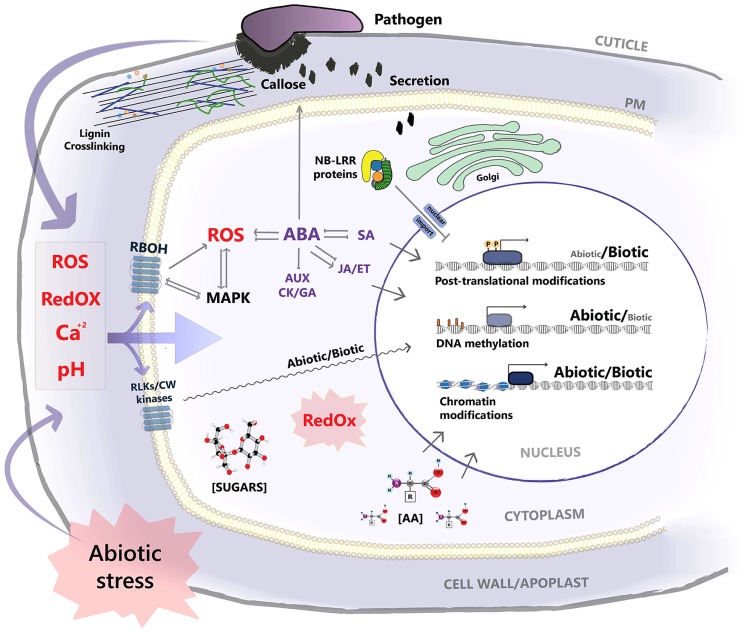FIGURE 1.
A scheme for the interaction interface and overlapping signaling pathways of abiotic and biotic stress at the cellular level. Both stress factors affect the homeostasis of chemical signals at the apoplastic space such as Ca2+, ROS, and pH levels. Abiotic stress potentially affects the structure and properties of preformed and inducible physical barriers that function against pathogen penetration. Signaling nodes such as RBOHs and RLKs and other cell wall (CW) kinases localized at the plasma membrane, and MAPKs are shared by both stressors, with downstream signal specificity under stress combination remaining elusive. ABA signaling, central for adaptation to abiotic stress, negatively impinges on defense hormone signaling, while, pathogen dependent, positive interactions are observed for JA signaling. ABA–SA interaction is two sided, as activation of SA signaling by pathogen challenge attenuates ABA responses. ABA positively contributes to pre-invasion defense, enhancing callose deposition. Rewiring of secretory machinery under abiotic stress potentially affects its function in the exocytosis of antimicrobial compounds at the site of infection. Nuclear translocation of R-genes is negatively affected under abiotic stress. Redox state, as well as metabolite concentration such as sugars and amino acids (AA), function as drivers for post-translational modifications, modulating the activity of target proteins/transcription factors. Previously/simultaneously encountered stress effect on chromatin and DNA methylation status, potentially impacts on expression patterns of the recipient genes under stress combination. Transcription factor activation and binding to stress responsive gene promoters is a convergence point regulating the signal output under combinatorial stress with diverse outcomes.

